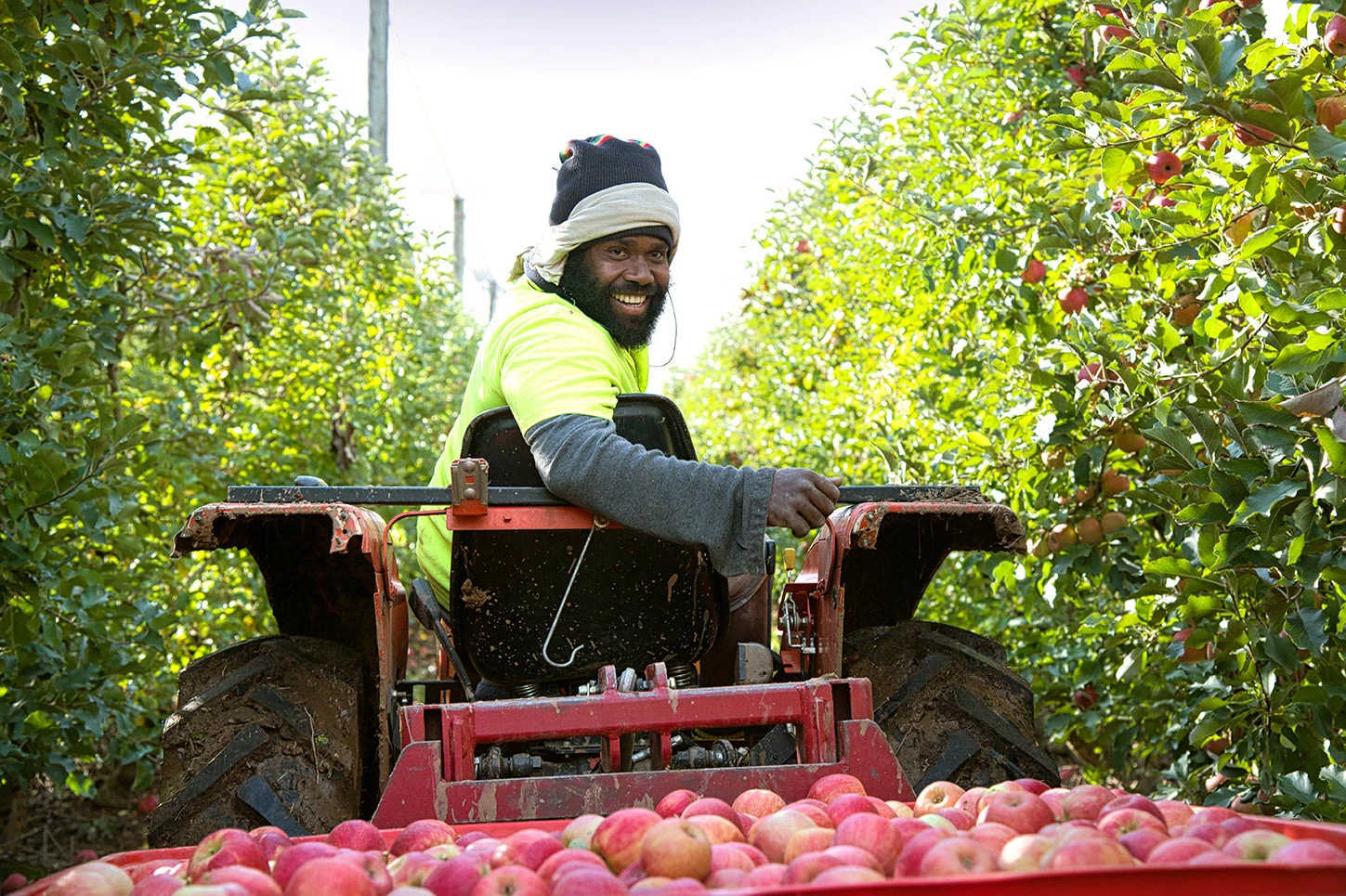 Man siting on a truck collecting apples in an orchard from the Pacific. © World Bank
Man siting on a truck collecting apples in an orchard from the Pacific. © World Bank
When our team set out to measure how temporary migrant workers from the Pacific had coped with the impacts of the COVID-19 pandemic, the survey data showed some surprising results about the resilience and the sacrifices of migrant workers. Despite significant disruption to employment, earnings losses, and health impacts, remittances from Pacific migrant workers seem to have weathered the storm of the pandemic. This is welcome news because this lifeline will remain essential for the region for some time to come.
Labor mobility in the Pacific region
With limited formal employment opportunities at home, workers throughout the Pacific are increasingly finding jobs overseas. Every year, thousands of low and semi-skilled Pacific workers migrate for temporary work under the Pacific Australia Labour Mobility scheme in Australia – which consists of two programs, the Seasonal Worker Programme (providing seasonal low-skilled employment for up to nine months per year), and the Pacific Labour Scheme (semi-skilled jobs for between one and three years) – as well as the Recognized Seasonal Employers scheme in New Zealand. They form part of a broader Pacific workforce that resides overseas and sends money home, supporting the livelihood of a significant share of the population.
In fact, seven of the top 10 remittance receiving countries in the world (by share of GDP) are in the Pacific. Tonga tops the list, with remittance inflows equivalent to about 38 percent of GDP in 2020; about four in five Tongan households receive remittances from overseas.
However, the COVID-19 pandemic has profoundly disrupted these critical sources of employment and income. At the wake of the pandemic, border closures left thousands of seasonal workers stranded in Australia and New Zealand , facing long separations from family and periods of uncertainty around their visas and employment. And conversely, many prospective migrant workers had their trips cancelled, losing potential income, as well as the money that they had invested to prepare for the trip.
Our team conducted a series of phone surveys between June and September 2020 – at the peak of the first wave of the pandemic – to assess its impacts on temporary labor migration from the Pacific. The surveys covered temporary migrant workers from six countries (Fiji, Kiribati, Samoa, Timor-Leste, Tonga and Vanuatu), their households, employers, and the Pacific diaspora in Australia and New Zealand, with the findings published in our new report, Pacific labor mobility, migration, and remittances in times of COVID-19.
Here’s a quick summary of what we learned:
Impacts on workers in host countries
The pandemic and lockdown measures caused significant disruption to the employment of migrant workers. Two thirds of seasonal workers reported reduction in work hours, losing 18 hours a week on average, equal to a 37 percent decrease. Consequently, 68 percent of seasonal workers reported that their earnings between March and August 2020 were lower than in the pre-COVID period. Workers in the semi-skilled Pacific Labour Scheme (PLS) were also adversely affected by the crisis, but to a lesser extent; likely due to their longer, non-seasonal contracts and higher income levels.
The decreases in earnings, however, translated into significantly smaller decreases in remittances. While 68 percent of seasonal workers saw their earnings fall, only 47 percent sent less money home. Similarly, 36 percent of PLS workers experienced income losses, yet only 18 percent reduced their remittances. Notably, about 40 percent of the seasonal workers who earned less during the crisis either maintained or even increased their remittances, often at the expense of their own consumption and savings.
However, impacts of the crisis on migrant workers are not only economic. Seasonal workers reportedly experienced high mental health burdens due to uncertainties related to their visa, repatriation, infection risk and the wellbeing of their families back home.
Impacts on households of temporary migrant workers
The economic fallout of the COVID-19 pandemic led to decreases in the incomes that households of migrant workers earned at home. In extreme cases, about 12 percent of surveyed households reported having no income since lockdown measures were first imposed in their countries.
In this context of hardship, remittances proved critical in supporting the livelihoods of worker households. About 91 percent of households mainly used remittances for food and daily expenses. Households with seasonal workers overseas (and thus, those who could receive remittances) reported lower levels of financial anxiety and spent about 17 percent more on consumption than those with workers whose trips were cancelled due to the pandemic. They were also significantly less likely to resort to coping strategies that would adversely affect them in the longer term, such as reducing consumption, depleting savings, selling assets and livestock, taking a loan, or pulling children out of school.
Looking ahead
Despite the overall negative impacts of the COVID-19 crisis and challenges with international travel, demand for labor mobility schemes has remained strong. The majority of seasonal workers surveyed – 95 percent – wanted to return the next season; and employers (98 percent) were just as eager to have them back.
This is positive for Pacific Island countries and Timor-Leste. As the Pacific tourism industry and broader economies take time to recover in the years ahead, overseas employment will remain a vital source of income for many households in the region.
The report, Pacific labor mobility, migration, and remittances in times of COVID-19, explores the impacts of the crisis and prospects for Pacific labor mobility in further detail.



Join the Conversation